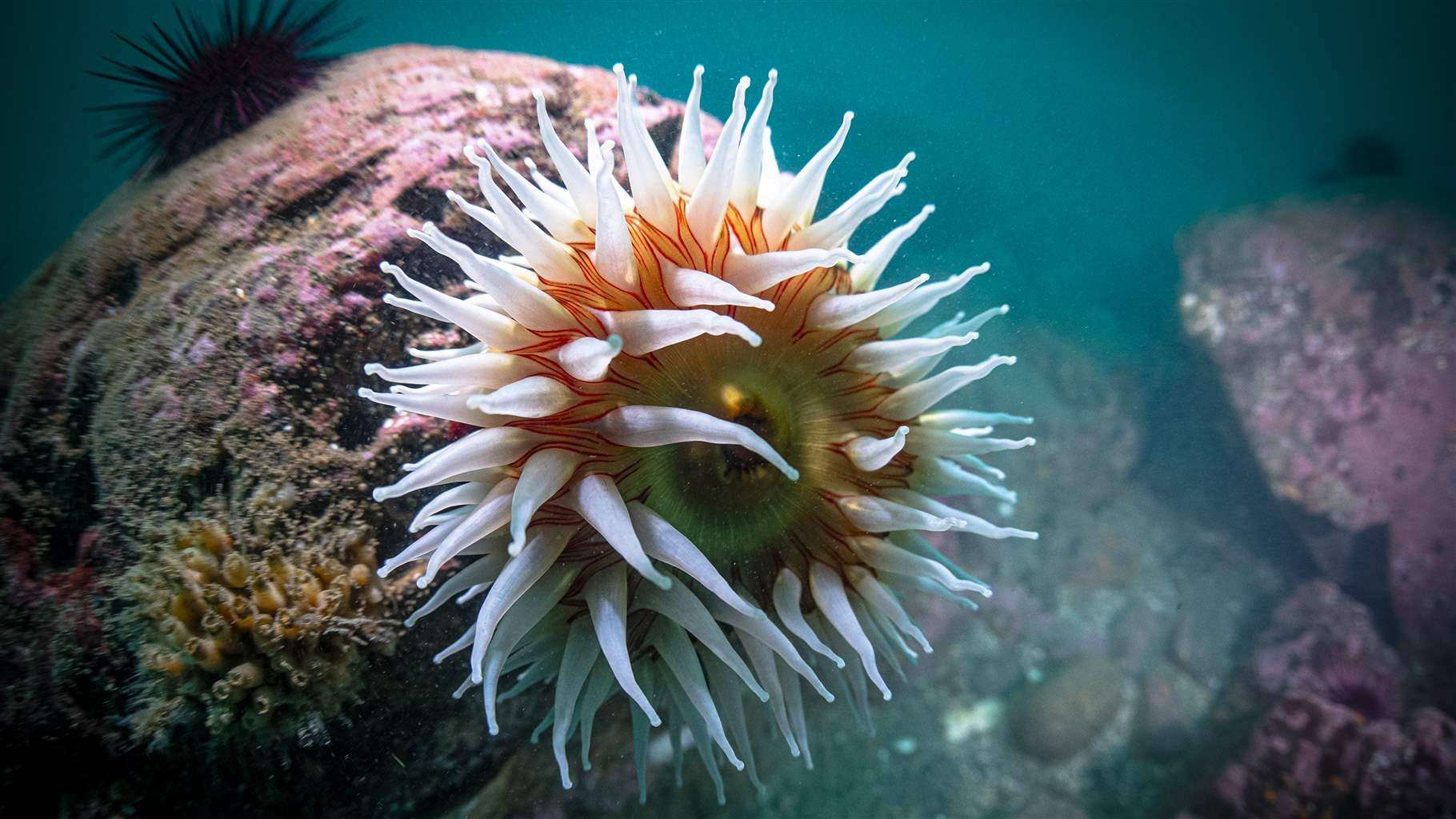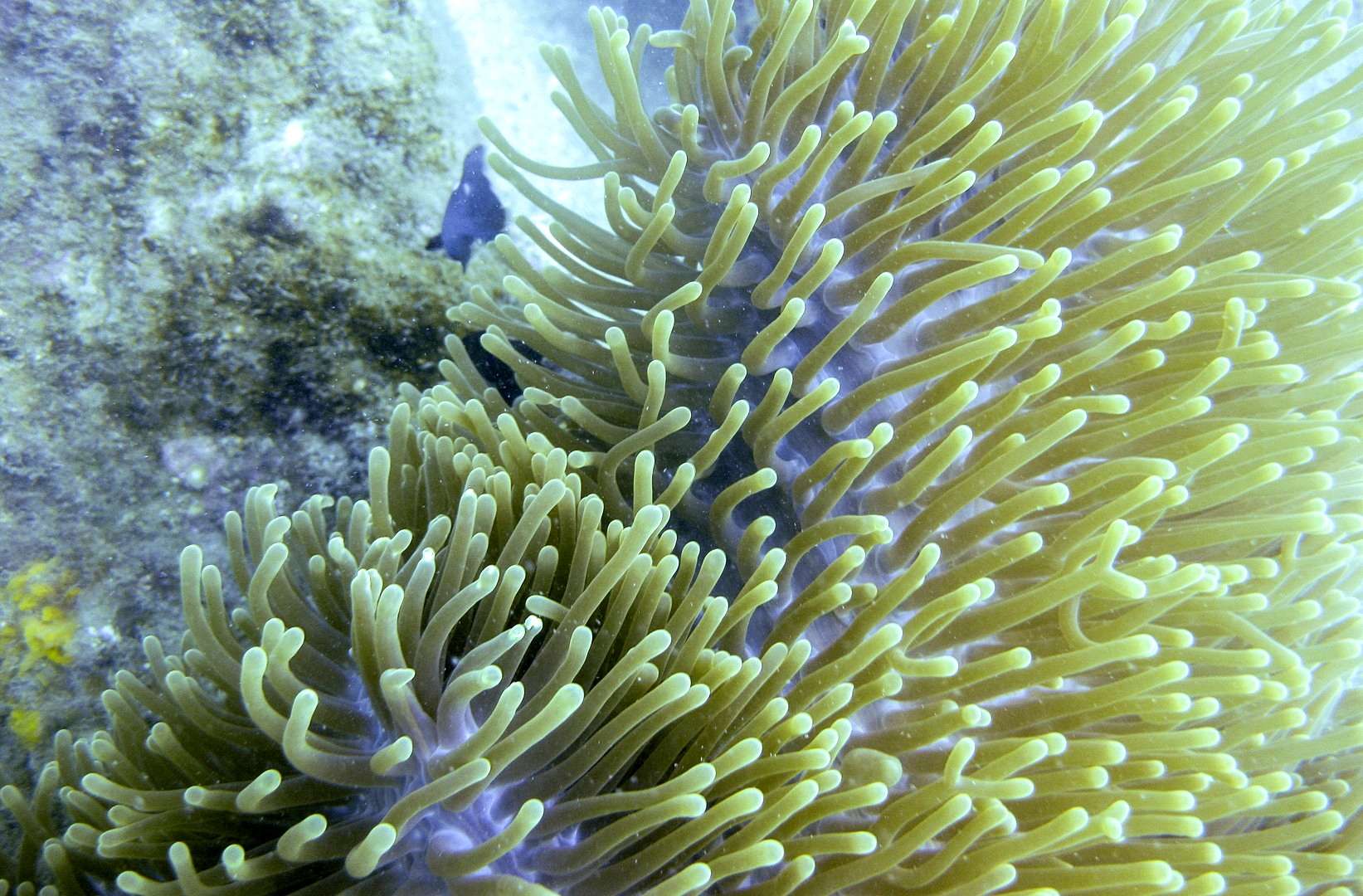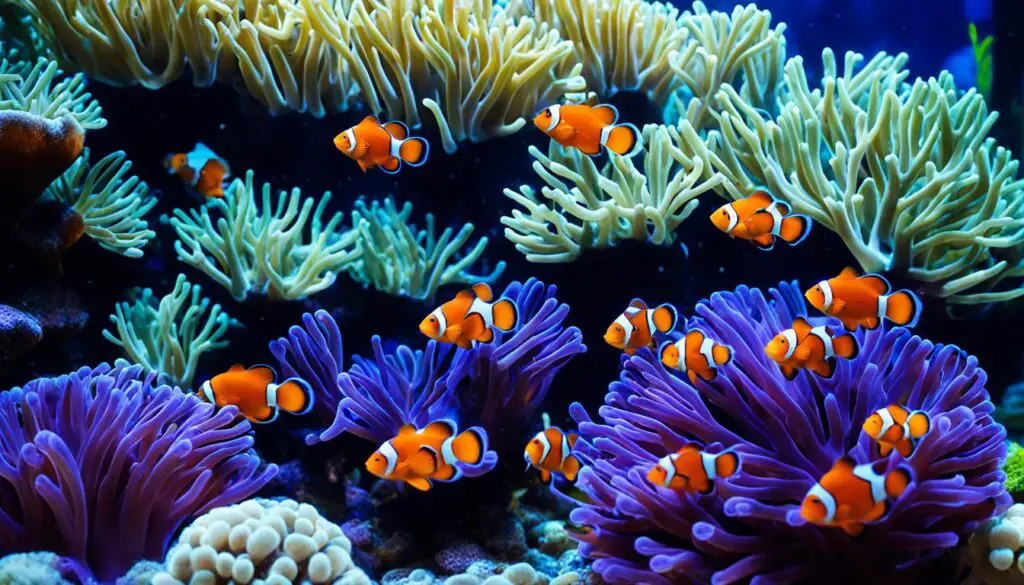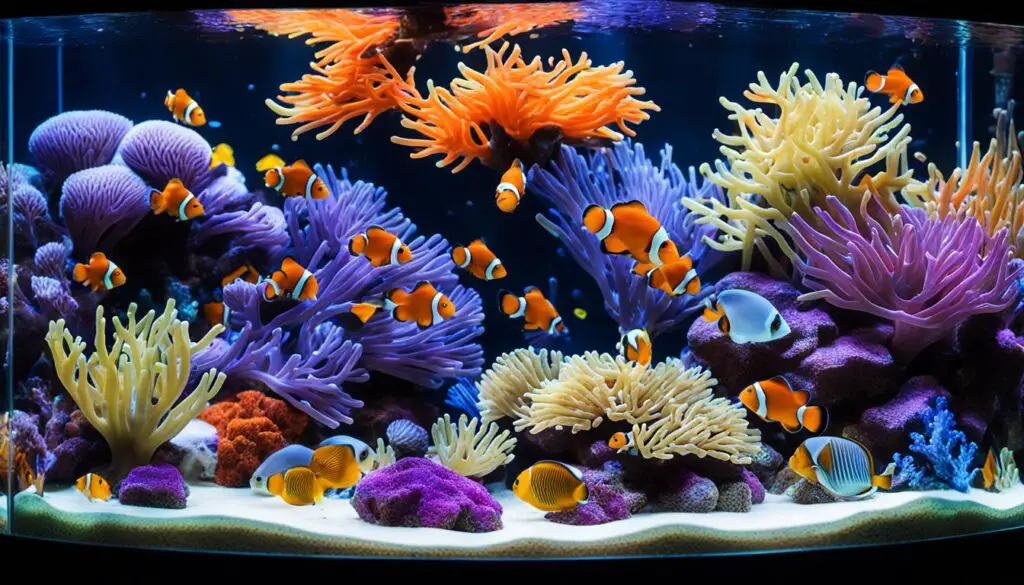Does Sea Anemone Sting

Introduction
Does Sea Anemone Sting: Sea anemones, captivating denizens of the ocean’s depths, possess a hidden arsenal that belies their tranquil appearance: a potent stinging ability. These marine invertebrates, relatives of corals and jellyfish, have evolved a formidable defense mechanism to navigate their underwater realms. Armed with specialized cells known as nematocysts, sea anemones use this natural weaponry to stun and capture prey, as well as deter potential threats.
The nematocysts, nestled within their vibrant, tentacle-laden bodies, contain coiled, harpoon-like structures loaded with venom. When triggered by physical contact or chemical cues, these harpoons explosively discharge, propelling into the target with astonishing speed. This swift action allows sea anemones to immobilize prey, ensuring a successful capture. Remarkably, this complex predatory tool also serves as a powerful deterrent against predators, providing a crucial line of defense for these otherwise stationary creatures.
This stinging adaptation has been honed over millions of years, showcasing the intricate interplay of evolution and survival in the underwater world. As we delve deeper into the mysteries of sea life, understanding the mechanisms behind a sea anemone’s sting not only enriches our knowledge of marine biology but also underscores the marvels and complexities of nature’s diverse inhabitants. This natural defense mechanism serves as a testament to the ingenuity of life forms, highlighting the awe-inspiring intricacy that thrives beneath the waves.

How painful is a sea anemone?
Sea anemone stings typically occur when they are accidentally brushed up against or purposely touched by the unknowing. Initial symptoms vary from a prickly sensation to severe burning at the wound site. The pain increases in intensity and may extend proximally into local lymph nodes.
A sea anemone’s sting can be quite painful for many creatures, but its impact on humans varies depending on the species and individual sensitivity. Sea anemones possess specialized cells called nematocysts that contain venomous harpoon-like structures. When triggered, these nematocysts shoot out, injecting toxins into their prey. For humans, encountering a sea anemone can result in a stinging sensation akin to a bee or wasp sting. In some cases, especially with more potent species, the pain can be more intense, often accompanied by redness, swelling, and localized discomfort. That while sea anemone stings can be painful, they are generally not life-threatening to humans.
The level of pain experienced from a sea anemone’s sting can also be influenced by factors such as the size of the anemone, the depth of penetration, and the individual’s sensitivity to the venom. Additionally, certain species of sea anemones possess more potent toxins than others, and their stings may cause more severe reactions. While the pain can be unpleasant and may require some basic first aid measures like rinsing the affected area with seawater and removing any tentacles still attached, it’s crucial to seek medical attention if a person experiences an allergic reaction or if the symptoms persist or worsen.
While a sea anemone’s sting can be painful, it is typically not a cause for major concern for humans. However, it’s essential to exercise caution when handling or encountering these creatures in their natural habitat to minimize the risk of a sting and to promptly seek medical attention if a sting occurs and symptoms become severe.
Are anemone stings poisonous?
Sea anemones have sting venoms to catch and immobilize small fishes and shrimps for feeding and protection. Most are not harmful for humans or only cause mild dermatitis. A few species possess highly toxic venoms and are hazardous for humans.
Anemone stings are indeed poisonous. Anemones possess specialized cells called nematocysts, which contain tiny harpoon-like structures loaded with venom. When triggered by contact with prey or a potential threat, these nematocysts shoot out, injecting toxins into the target. The venom of sea anemones serves as a defense mechanism and a means of subduing prey. While the potency of the venom varies among different species, it can be harmful to a wide range of marine organisms, from small fish to crustaceans.
For humans, anemone stings can be painful and potentially cause localized discomfort, redness, and swelling. The severity of the symptoms depends on various factors, including the individual’s sensitivity to the venom, the species of the anemone, and the location and depth of the sting. While anemone stings are generally not fatal to humans, there can be exceptions, especially if a person has an allergic reaction or an existing medical condition that could exacerbate the effects of the venom.
To exercise caution when interacting with sea anemones in their natural habitat, as well as to be aware of first aid measures in case of a sting. Rinsing the affected area with seawater and removing any remaining tentacles is a recommended immediate response. Seeking medical attention promptly is advisable, particularly if the symptoms persist, worsen, or if there’s an indication of an allergic reaction.
Does sea anemone sting?
Each tentacle is equipped with thousands of nematocysts that contain a tiny, coiled, harpoon-like structure which is ejected upon contact with prey, piercing their skin and pulling them into their mouth. Luckily, most anemones don’t have large enough stinging cells to affect humans, but there are some to be wary of.
Sea anemones do have the ability to sting. They possess specialized cells called nematocysts, which are essentially microscopic harpoon-like structures filled with venom. When triggered, these nematocysts shoot out, allowing the sea anemone to inject toxins into their prey or potential threats. This mechanism serves as both a defense mechanism and a means of subduing prey. The potency of the venom can vary among different species of sea anemones.
For humans, coming into contact with a sea anemone can result in a stinging sensation. The intensity of the sting depends on factors such as the species of the anemone, the depth of penetration, and the individual’s sensitivity to the venom. While sea anemone stings are generally not life-threatening to humans, they can be painful and may cause localized discomfort, redness, and swelling. To exercise caution when interacting with sea anemones to minimize the risk of a sting.
If someone does get stung by a sea anemone, there are recommended first aid measures to follow. Rinsing the affected area with seawater and carefully removing any remaining tentacles can help mitigate the effects of the venom. Seeking medical attention is advisable, especially if the symptoms persist, worsen, or if there is any sign of an allergic reaction.
Do anemone stings hurt?
The skin reaction varies by sea anemone species. The venom of some species produces painful urticarial lesions; others induce erythema and edema. Some lesions may eventually blister, and in severe cases, necrosis and ulceration may result. Secondary infection is possible.
Anemone stings can be painful. Sea anemones are equipped with specialized cells called nematocysts, which contain tiny harpoon-like structures loaded with venom. When triggered, these nematocysts shoot out, allowing the sea anemone to inject toxins into their prey or potential threats. When a human comes into contact with a sea anemone, these nematocysts can also penetrate the skin, causing a stinging sensation. The level of pain experienced can vary depending on factors such as the species of the anemone, the depth of the sting, and an individual’s sensitivity to the venom.
The pain from a sea anemone sting is often described as similar to that of a bee or wasp sting. It can range from mild discomfort to more intense pain, especially if the sting is from a species with particularly potent venom. In addition to pain, a person may experience redness, swelling, and localized discomfort around the affected area. While sea anemone stings are generally not life-threatening to humans, to treat them promptly and seek medical attention if symptoms become severe or if there is any indication of an allergic reaction.
While anemone stings can be painful, they are typically not a cause for major concern for humans. Nevertheless, it’s crucial to exercise caution when interacting with sea anemones in their natural habitat and to be aware of appropriate first aid measures in case of a sting. Rinsing the affected area with seawater and removing any remaining tentacles are recommended immediate responses.
Is it OK to touch sea anemone?
Sea anemones are marine animals that are related to corals and jellyfish. They have tentacles armed with specialized stinging cells called nematocysts, which they use for hunting and defense. Touching sea anemones can be risky, and it is generally not recommended.
Touching sea anemones can be harmful to both the organism and potentially to you. These fascinating creatures may look delicate, but they are actually predatory animals equipped with specialized stinging cells called cnidocytes. These cells are used to paralyze and capture prey. When a sea anemone is touched, even gently, it can interpret the contact as a potential threat. In response, it may discharge its stinging cells, which can cause discomfort, irritation, and even allergic reactions in some individuals. Therefore, it is generally advised to avoid touching sea anemones in their natural habitats to protect both the anemone and yourself.
To the potential harm it can cause to the sea anemone, touching them can also disrupt their natural behavior and feeding patterns. These creatures rely on a delicate balance of environmental conditions to survive. When disturbed, they may retract their tentacles or even detach from their substrate, leaving them vulnerable and stressed. Prolonged stress can weaken anemones and make them more susceptible to disease and predation. This is why it’s crucial to observe these creatures from a respectful distance and refrain from touching them, allowing them to thrive in their natural environment.
If you are interested in learning more about sea anemones, consider visiting a reputable aquarium or educational institution where they are kept under controlled conditions. Here, you can often find informative displays and demonstrations that allow you to observe these fascinating creatures up close without causing them any harm. Appreciating marine life from a responsible distance ensures the well-being of these organisms and helps to preserve their delicate ecosystems for future generations to enjoy.
Do sea anemones sting other fish?
Anemone tentacles sting and kill other species of fish, but the clownfish is protected from the anemone’s sting. It is believed that the clownfish is protected due to a mucus coat on the outside of its skin.
Sea anemones do have the ability to sting other fish. They possess specialized stinging cells called cnidocytes on their tentacles. These cnidocytes are equipped with harpoon-like structures called nematocysts, which contain venom. When a sea anemone comes into contact with a potential threat or prey item, it uses these nematocysts to deliver a paralyzing toxin. This is how sea anemones capture and consume their prey.
That sea anemones are not aggressive in the same way predators like sharks or lions might be. They are primarily sessile creatures, meaning they are attached to a substrate and do not actively hunt for prey. Instead, they rely on their venomous tentacles to passively capture small fish and invertebrates that come into contact with them. Fish that inadvertently swim too close to a sea anemone’s tentacles can be stung and subsequently become immobilized, making them easier targets for the anemone to consume.
Some species of fish have developed unique adaptations to live in close association with sea anemones. These fish, such as certain species of clownfish, have a mucus layer that protects them from the stinging cells of the anemone. In return, the fish offer protection to the sea anemone by driving away potential predators.
Can sea anemones hurt humans?
Most sea anemones are harmless to humans [1], but a few of them are highly toxic. The toxin occasionally causes dermatitis and allergic shock, but it seldom causes multiple organ failure [2], hemolysis, and renal injuries, indicating hemolytic uremic syndrome (HUS) [1].
Sea anemones can potentially hurt humans. They possess specialized stinging cells called cnidocytes on their tentacles. These cnidocytes contain tiny harpoon-like structures called nematocysts that are loaded with venom. When a sea anemone comes into contact with a foreign object or a potential threat, it uses these nematocysts to deliver a paralyzing toxin. While sea anemone stings are not usually dangerous to humans, they can cause discomfort, irritation, and in some cases, allergic reactions.
It’s worth noting that the severity of a sea anemone sting can vary depending on factors such as the species of anemone, the individual’s sensitivity to the venom, and the location and depth of the sting. In some cases, individuals may experience mild swelling, redness, and pain. Allergic reactions, while rare, can lead to more serious symptoms. If stung, it’s advisable to rinse the affected area with vinegar (acetic acid) to neutralize the venom, followed by immersing the area in hot water to help alleviate pain.
While sea anemone stings are generally not life-threatening, to exercise caution and avoid unnecessary contact with them in their natural habitats. Admiring these creatures from a respectful distance ensures the safety of both humans and sea anemones, allowing them to thrive undisturbed in their marine environments.
Do anemones have poison?
Sea anemones have sting venoms to catch and immobilize small fishes and shrimps for feeding and protection. Most are not harmful for humans or only cause mild dermatitis. A few species possess highly toxic venoms and are hazardous for humans.
Anemones do possess a form of venom. This venom is found in specialized cells called cnidocytes, which are located on their tentacles. These cnidocytes contain tiny, coiled harpoon-like structures called nematocysts. Each nematocyst is filled with venomous substances. When a potential threat or prey item comes into contact with the tentacles of a sea anemone, the cnidocytes rapidly discharge, propelling the nematocysts into the target. This allows the anemone to immobilize and capture its prey.
While the venom of sea anemones is primarily used for capturing food, it can also serve as a defense mechanism. If a sea anemone perceives a threat, it can discharge its cnidocytes in an attempt to deter the potential predator or intruder. The severity of the sting can vary depending on factors such as the species of anemone, the individual’s sensitivity to the venom, and the location and depth of the sting. In humans, sea anemone stings are typically not life-threatening but can cause discomfort, irritation, and in rare cases, allergic reactions.
That some species of fish, like certain types of clownfish, have evolved a protective mucus layer that makes them immune to the stinging cells of sea anemones. This adaptation allows them to coexist in close association with the anemone, forming a unique and mutually beneficial relationship.

Conclusion
The sting of a sea anemone reveals an extraordinary adaptation honed by millennia of evolution. This natural defense mechanism, powered by nematocysts and venom, illuminates the intricate strategies marine life employs for survival. Beyond its role in predation, this stinging ability provides a crucial line of defense, allowing sea anemones to hold their ground in the dynamic and often perilous underwater world.
The sea anemone’s sting is a testament to the marvels of nature’s engineering. It showcases the profound ways in which organisms have evolved to navigate and thrive in their respective environments. This adaptation is not merely a matter of survival, but a reflection of the wondrous complexity that characterizes life beneath the waves.
Understanding the sea anemone’s stinging mechanism carries significance beyond the realm of marine biology. It offers insights into broader ecological interactions, highlighting the delicate balance that exists in marine ecosystems. As we continue to explore and protect our oceans, this knowledge becomes invaluable in safeguarding not only sea anemones but the entire web of life that relies on these diverse and vibrant habitats.



